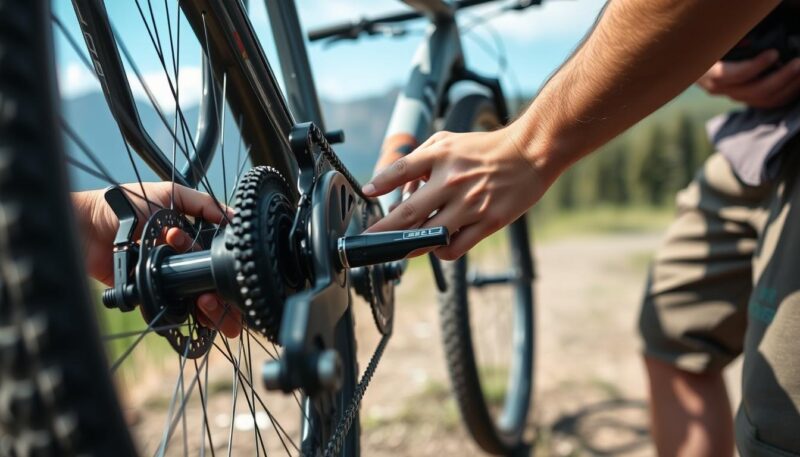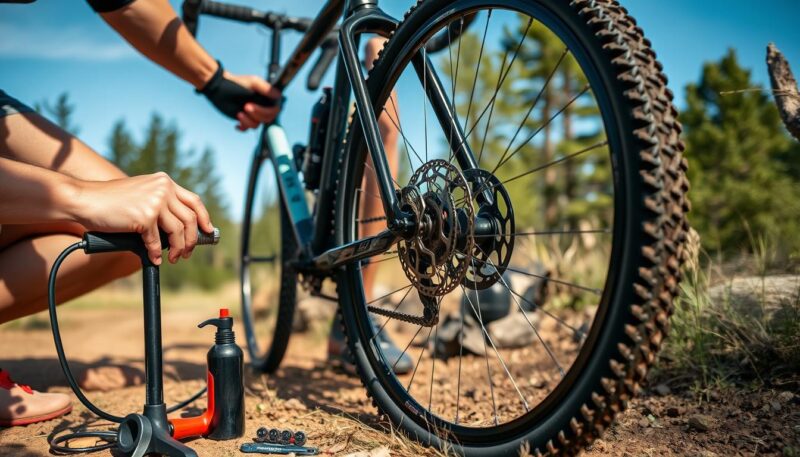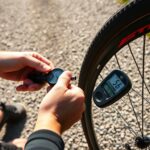Before you embark on your cycling journey, it’s crucial to conduct pre-ride bike checks. These essential procedures serve to ensure the reliability and performance of your bike, making certain that it is road-ready for whatever adventure lies ahead. Imagine setting out on a breathtaking bike trail or commuting to work, only to be interrupted by unexpected mechanical issues. By adopting key bike safety checks, you can greatly reduce the risk of such mishaps, ensuring smooth and enjoyable rides every time.
Learning how to prepare your bike for a ride isn’t just about checking off a list; it’s about boosting your confidence and enhancing your overall cycling experience. Regular inspections allow you to easily identify potential ground-level flaws, such as those pesky tire issues or brake performance problems that could disrupt your day. With a little knowledge and attention, you’ll be equipped to spot these concerns before they escalate into significant dangers. Join us as we explore the core components of pre-ride bike checks. With our guidance, you’ll be well on your way to mastering the art of keeping your bike in optimal condition, ready for any adventure that awaits.
Why Pre-Ride Bike Checks Are Essential for Safety
In the world of cycling, safety should always come first. Performing essential bike checks before riding ensures that your bicycle is ready to tackle any adventure on your itinerary. Comprehensive bike inspections before every adventure can prevent unforeseen mechanical failures and boost your confidence. Let’s delve into the critical aspects of these pre-ride bike checks for safety.
Identifying Potential Mechanical Failures
Routine assessments of your bike can identify small mechanical failures before they escalate into ride-ending problems. Focusing on vital components, such as brakes and tires, is key. For example, mountain bike tires lose significant grip when the tread thickness falls below 3mm. Proper inspection can help you catch issues like:
- Brake pads that need replacement when friction material is down to 1mm.
- Tires should be checked for embedded debris, cracks, and excessive wear.
- Chains that show 1% stretching need to be replaced to maintain efficiency.
| Component | Inspection Threshold | Recommended Action |
|---|---|---|
| Tire Tread Thickness | Less than 3mm | Replace tires |
| Brake Pads | Friction material at 1mm | Replace pads |
| Chain Stretch | 1% stretch | Replace chain |
Boosting Your Confidence on the Road
Conducting thorough pre-ride bike checks fosters a strong sense of knowledge and control regarding your bike’s performance. You will ride with enhanced confidence knowing that every part is in optimal condition. Properly maintained bikes allow you to handle challenging scenarios without the burden of slipping gears or inadequate braking. Here are some essential checks to undertake:
- Ensure bolts are tightened to prevent components from coming loose.
- Check the efficiency of your brakes; they should not rub against the disc rotor or wheel rim.
- Monitor tire pressure regularly to avoid flat tires during your journey.
Essential Pre-Ride Bike Checks You Should Not Skip
Taking the time to conduct essential bike checks before riding can significantly enhance your safety and performance on the road. By establishing a routine for pre-ride bike checks, you can quickly identify any potential issues and ensure that your bike is ready for adventure. Here are the crucial checks you should include in your pre-ride checklist.
Inspecting Your Tires
Start by inspecting your tires for any visible damage, such as cracks, cuts, or blisters. Look for bald spots where tread may be wearing thin. Maintaining proper tire pressure is key to bike performance; ensure that your tires are inflated according to the manufacturer’s specifications. Paying attention to tire condition can prevent punctures and provide better handling. Remember, a quick visual inspection can save you time and trouble while out on the road.
Assessing Brake Performance
Testing your brakes is a must before every ride. Pull the brake levers to gauge their responsiveness and ensure they return quickly to the ‘off’ position. Check for any wear on the brake pads, noting that disc brakes require at least 1.5mm of material remaining. Proper brake function is crucial for your safety; take the time to ensure that they are in optimal condition.
Checking Quick Releases and Spoke Tension
Regularly check the quick release mechanisms for your wheels and seat posts. They should be securely tightened to avoid accidents caused by loose components. Additionally, assess the spoke tension by feeling for evenness across the wheel. Loose spokes can lead to misalignment, which can hinder your ride. Making these checks can greatly enhance your overall riding experience.
Evaluating Gear and Drivetrain Functionality
The efficiency of your gear system significantly impacts your ride. Test the shifting mechanism by running through each gear, ensuring smooth transitions without hesitation. Inspect cables for any signs of wear while confirming that components like derailleur hangers are aligned correctly. Regular lubrication of the chain and shifter cables can improve the bike’s performance and ensure a quieter ride.

| Pre-Ride Check | Action Steps | Frequency |
|---|---|---|
| Tire Inspection | Check for damage & inflate to recommended pressure | Every ride |
| Brake Performance | Test lever response & inspect pads | Every ride |
| Quick Releases | Ensure tightness | Every ride |
| Gear Functionality | Test shifting and inspect cables | Every ride |
Engaging in these essential bike checks before riding enhances safety and helps you understand how to prepare your bike for a ride effectively. Taking this systematic approach ensures that you enjoy a smooth and secure cycling experience every time you hit the road.
Conclusion
Regular pre-ride bike checks are vital for ensuring your bike is road-ready, providing both a safer and more enjoyable riding experience. By committing to essential bike checks before riding, you significantly reduce the risks associated with mechanical failures. Routine inspections allow you to identify potential issues with key components such as brakes, gears, and tires, all of which play a crucial role in your bike’s performance and safety.
Furthermore, these checks foster a deeper understanding of your bike’s mechanics. Knowing the condition of your equipment empowers you to tackle each cycling adventure with confidence. Making bike safety checks a habit not only enhances your cycling enjoyment but also encourages a mindful approach to riding.
Ultimately, taking just a few minutes before each ride to perform pre-ride checks can prevent accidents and hassle on the road. Embrace this practice, and you’ll be well-equipped to face any challenge your cycling journey may present.






